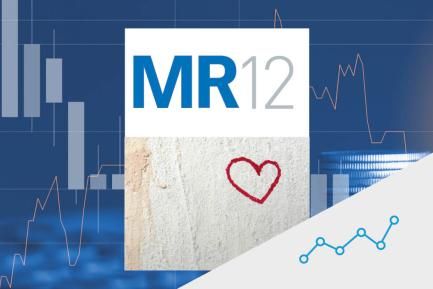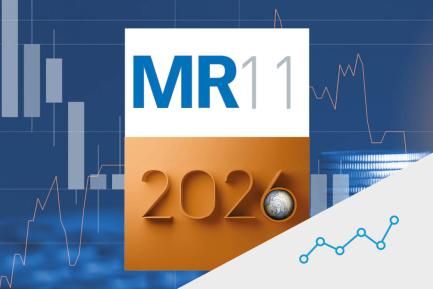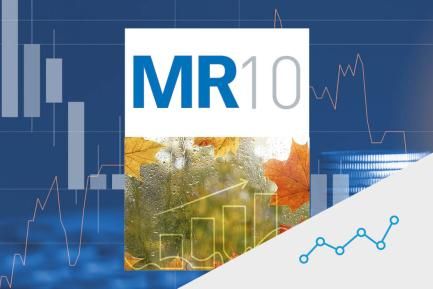
The financial markets reflect an outlook marked by inflation
Investors anticipate an earlier rise in interest rates
Inflation continued to dominate the financial markets’ focus of attention. Confirmation of the rise in inflation rates at the global level, combined with the persistence of bottlenecks and high commodity prices, triggered the rally in inflation expectations in the major economies. In addition, several central banks (in Canada, the United Kingdom, Australia and New Zealand) announced their intention to tighten their monetary policies in the short term in the face of the persistent inflationary tensions. These messages also led to expectations among investors that, besides the confirmed withdrawals of monetary stimulus, the Fed and the ECB could implement their response sooner than previously anticipated. Moreover, in several emerging countries, central banks opted to accelerate the rise in their benchmark rates in the face of rising inflation rates and at the risk of compromising the pace of their economic recovery. In this context, the financial markets showed mixed behaviour, with sell-offs in the bond markets, the dollar holding up, and gains in the stock markets.

The slope of the US sovereign yield curve moderates
In the case of the US economy, the wage growth reflected in the latest employment data, coupled with the factors discussed above, drove medium-term inflation expectations above the Fed’s 2% target, reaching levels not seen since 2014. It was precisely this movement that led interest rates to rise in the long-term segments of the sovereign yield curve in a context of high volatility. In particular, the yield on the 10-year US treasury rose by 6 bps in the month, reaching around 1.55%. There were also notable movements in the short section of the curve, driven on the one hand by the spread of inflationary pressures and, on the other, by the hawkish tone shown by some central banks (as we mentioned above). The result was a rise in money market rates, particularly the 12-month US Libor rate and the yield on the 2-year bond (which climbed 22 bps to 0.5%). In fact, at these levels investors seem to be anticipating that the first Fed funds rate hike will occur in the summer of 2022. This will certainly be one of the topics to watch at the Fed’s November meeting, in addition to the official tapering timeline.

The ECB fails to fully convince investors
At its October meeting, the ECB kept both official interest rates and the rate of asset purchases under the PEPP and the APP unchanged, and it maintained its positive view of the pace of recovery of the economy as a whole. Regarding inflation, Christine Lagarde pointed out that the current high level is due to temporary factors which should fade during the course of 2022, and despite acknowledging the risk of second-round effects, the institution opted to keep its forward guidance unchanged (see the Nota Breve). This assertion contrasted with investors’ valuations, which forecast a scenario of high and less transient inflation, indicating that the monetary authority could bring forward its first deposit interest rate hike to sometime between late 2022 and early 2023. Thus, just like in the US, rates in the short sections of the euro area sovereign yield curve rose in the closing days of the month, increasing by slightly more than long-term interest rates (the 10-year bund climbed 9 bps to –0.11%). The lack of mention of the rate of purchases under the PEPP, meanwhile, pushed risk premiums of the euro area periphery slightly up, with the exception of Italy, which saw its risk premium rise by 7 bps.


The natural gas price rally slows
Following the surge in tensions in September, and for the first time since the beginning of the year, the price of natural gas ended the month down (the Dutch TTF, the European benchmark, fell by 29%). Factors which favoured the easing of prices included Russia’s commitment to supply Europe over the coming months and the decline in the cost of coal (after China sold a portion of its strategic reserves). This latter element should favour lower pressure on the demand for liquefied natural gas in Asia for electricity generation. The other side of the coin was oil, which saw its price climb to a three-year peak in the face of declining inventories in the US and the need for investment in the Persian Gulf in order to sustain production. In this context, the rise in interest rates of the US yield curve favoured the strength of the dollar against emerging currencies, with the exception of the Russian rouble.

The stock markets recover their rhythm
In October, the major stock market indices registered significant gains in advanced economies, amounting to around 7% in the S&P 500 and 5% in the case of the Eurostoxx 50. The recovery in prices was mainly due to two factors: the resilience of the economic recovery and the good start to the Q3 corporate earnings campaign. This latter aspect was very well received by investors, since it highlighted the productive sector’s capacity to maintain margins in an environment of higher input costs. Up until the closing date for this publication, more than 80% of the S&P 500 firms that have published their results have exceeded consensus earnings expectations. The rally in risk-free rates, meanwhile, limited the gains in emerging economies’ equity markets, which showed a more modest performance (MSCI Emerging Markets +0.9%).



